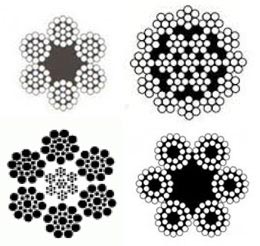 One of the most common questions we get asked is the difference between 7x19 and 7x7 wire cables. This question is frequently asked because these two types of cables are the most common cable constructions for many industries, including aircraft controls. Because of the number of mechanical applications that both cables boast, it is essential to recognize the difference between the two for your application. Even though both wire ropes are reliable and robust, they should not be used interchangeably. Using the correct gear is essential for safe operations. If you still have more questions about 7x7 and 7x19 wire ropes by the end of this article, you should not hesitate to reach out for more assistance.
One of the most common questions we get asked is the difference between 7x19 and 7x7 wire cables. This question is frequently asked because these two types of cables are the most common cable constructions for many industries, including aircraft controls. Because of the number of mechanical applications that both cables boast, it is essential to recognize the difference between the two for your application. Even though both wire ropes are reliable and robust, they should not be used interchangeably. Using the correct gear is essential for safe operations. If you still have more questions about 7x7 and 7x19 wire ropes by the end of this article, you should not hesitate to reach out for more assistance.
The numbers in the names of these wires represent the number of strands and wires each rope contains. A 7X7 cable is built from 7 strands, and each strand has 7 wires (49 wires in total). The 7x19 variant includes 7 strands with 19 wires, giving the rope 133 wires. When you do the math, a 7x19 cable has over 2.5 times the number of wires in a 7x7 construction.
Wire counts directly represent the versatility and flexibility offered by the individual rope. Both are relatively flexible (especially when compared to 1x7 wire ropes). When compared to ropes with a lower wire count, higher count wire ropes allow for easy bending, which makes them ideal for operations that contain pulley systems. The difference between flexibility ratings for 7x7 and 7x19 is more complex than a simple wire count. 7x19 wire ropes are typically the intelligent choice for garage doors, winches, and any other application that requires frequent and tight turns. 7x7 ropes are rigid, which makes them an excellent choice for aircraft and automotive controls. If fatigue is one of your significant concerns, a 7x19 wire rope is an intelligent choice. Use 7x7 ropes when you do not need high levels of flexibility
RELATED READING: